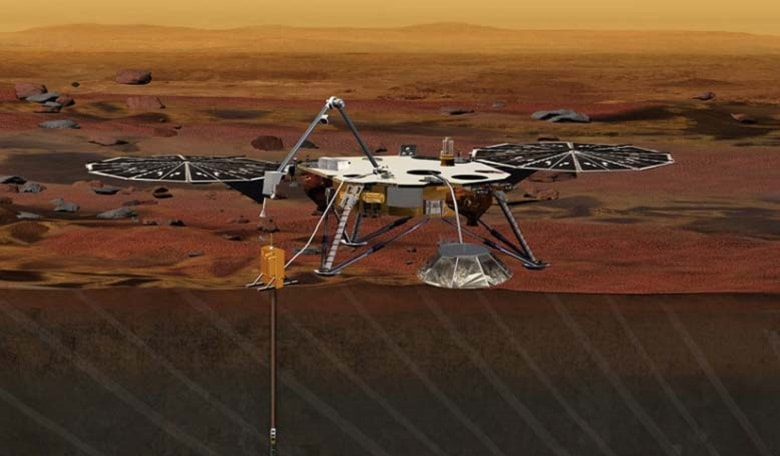The InSight Mars lander is facing about $150 million in additional costs due to an instrument problem that caused it to miss its launch window this year.
InSight was scheduled to launch in March and land on Mars in September. The spacecraft is designed to study the planet’s interior using a probe to measure heat flow below the surface and a seismometer provided by the French space agency CNES.
But in December 2015, NASA announced that it was postponing the launch because of problems with leaks in the seismometer, which requires a very strong vacuum to operate. The instrument suffered several leaks during its development, and NASA decided that the problems could not be fixed in time for a March launch.
In a presentation to a meeting of the Mars Exploration Program Analysis Group (MEPAG) on March 2, Bruce Banerdt, principal investigator of the InSight Mars lander mission, said the project has completed a revised plan for the mission that supports a launch in 2018, and presented that plan to NASA officials a day earlier.
“That presentation went very well,” he said of the NASA briefing. “We had a lot of probing questions and difficult conversations, but overall, I think that we got a positive response.”
“That was going to take us about three or four weeks beyond our launch if everything went well, so that was not in the cards,” Banerdt said of plans to fix the seismometer after the latest leak. “We know what went wrong. We know how to go about fixing it.”
The next Mars launch window will be in 2018, and according to the revised plan, InSight would launch on May 5, 2018 from Vandenberg Air Force Base in California, landing on the Elysium Planitia region of Mars on November 26, the same landing site as previously planned. The mission would last though November 2020.
The revised plan will add $150 million to the project, which would cover modification and testing of the seismometer and the 2018 launch. It is now up to NASA to make a decision on whether they will spend that money on the 2018 launch, cancel the mission altogether, or come up with another option.
“We’re well on our way to making a decision on InSight”, said Jim Green, the director of NASA’s planetary sciences division. “Perhaps we’ll be able to announce what our next steps are for InSight within this next week or so.”
If NASA decided to go ahead with InSight, it would need to find that money, most likely within the agency’s planetary sciences program. “It means less money to do something else,” Banerdt said. “Sorry about that.”
Banerdt said one option not under consideration was having CNES pay for at least part of the additional costs because its instrument caused the delay. “They will be spending money on the overrun” to correct the instrument problem, he said. “They won’t be giving us any money to do the things we need to do, and that’s because that’s the way international collaborations work: no money changes hands.”











